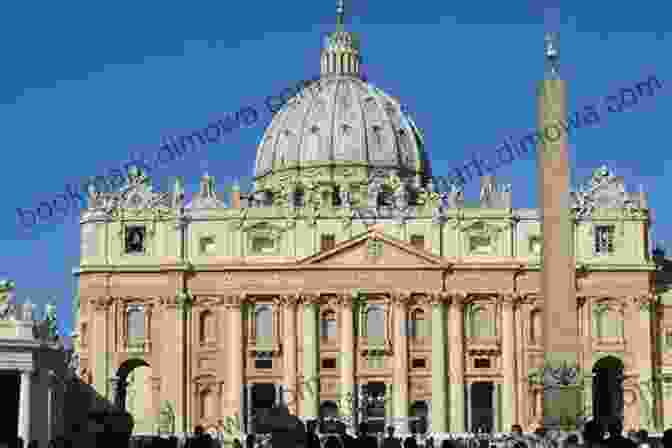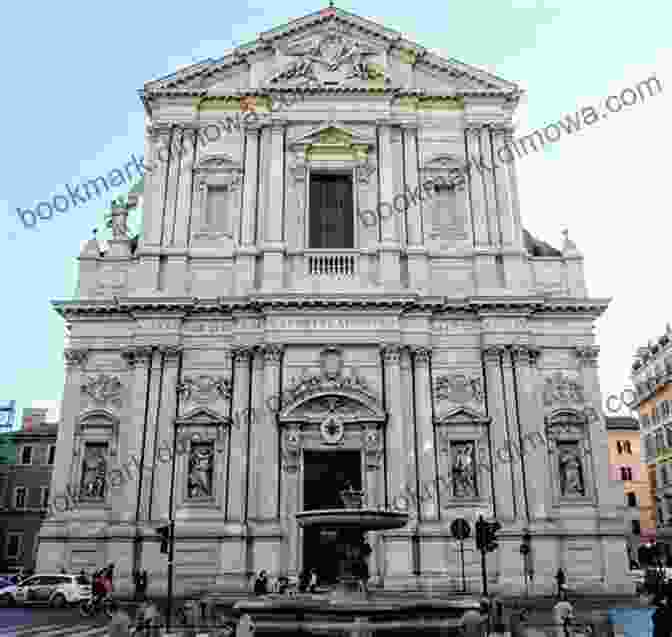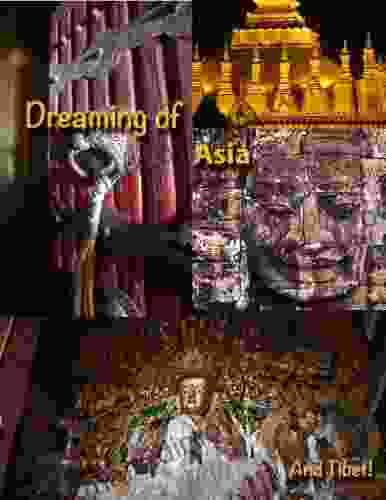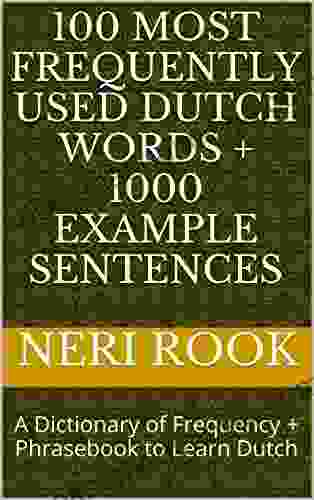Stone Construction and Geometry in Western Europe 1200–1900: Mathematics and the Building Arts

The period between 1200 and 1900 witnessed a remarkable flowering of stone construction in Western Europe. From the soaring Gothic cathedrals to the elegant Renaissance palaces, stone was the material of choice for architects and builders. This article explores the intricate relationship between mathematics and the building arts during this period, revealing the secrets behind some of the most iconic structures of the time.
Gothic Architecture (1200–1500)
The Gothic period was a time of great innovation in stone construction. Architects and builders developed new techniques to create lighter, taller, and more spacious structures. The pointed arch, ribbed vault, and flying buttress were just a few of the innovations that made Gothic architecture possible.
5 out of 5
| Language | : | English |
| File size | : | 44263 KB |
| Print length | : | 755 pages |
| Screen Reader | : | Supported |
| X-Ray for textbooks | : | Enabled |
Mathematics played a crucial role in the design and construction of Gothic buildings. Architects used geometry to determine the proportions of the building and to create complex vaults and arches. They also used mathematical calculations to ensure that the structures were stable and strong.
Chartres Cathedral (France)
Chartres Cathedral is one of the finest examples of Gothic architecture in the world. It was built between 1194 and 1260 and is known for its stunning stained glass windows and its innovative use of flying buttresses.

The architects of Chartres Cathedral used mathematics to design a building that was both beautiful and structurally sound. They calculated the proportions of the building based on the golden ratio, which is a mathematical ratio that has been used in art and architecture for centuries. They also used mathematical calculations to determine the size and shape of the flying buttresses, which were essential to supporting the weight of the vaulted roof.
Renaissance Architecture (1400–1600)
The Renaissance period saw a renewed interest in classical architecture. Architects and builders began to use the principles of Roman and Greek architecture to create new buildings that were more symmetrical and harmonious than Gothic buildings.
Mathematics continued to play a vital role in the design and construction of Renaissance buildings. Architects used geometry to create harmonious proportions and to design complex structures such as domes and vaults.
St. Peter's Basilica (Vatican City)
St. Peter's Basilica is one of the largest and most impressive churches in the world. It was built between 1506 and 1626 and is known for its massive dome and its opulent interior.

The architects of St. Peter's Basilica used mathematics to design a building that was both structurally sound and aesthetically pleasing. They calculated the proportions of the building based on the golden ratio and used mathematical calculations to determine the size and shape of the dome. The dome is one of the largest in the world and is a testament to the skill of the Renaissance architects and builders.
Baroque Architecture (1600–1750)
The Baroque period was a time of great exuberance in architecture. Architects and builders created buildings that were characterized by their elaborate ornamentation and dramatic curves.
Mathematics continued to play an important role in the design and construction of Baroque buildings. Architects used geometry to create complex curves and to design structures that were both visually appealing and structurally sound.
Church of Sant'Andrea della Valle (Rome, Italy)
The Church of Sant'Andrea della Valle is one of the most important Baroque churches in Rome. It was built between 1626 and 1667 and is known for its stunning dome and its elaborate interior.

The architects of the Church of Sant'Andrea della Valle used mathematics to design a building that was both visually appealing and structurally sound. They calculated the proportions of the building based on the golden ratio and used mathematical calculations to determine the size and shape of the dome. The dome is one of the largest in Rome and is a testament to the skill of the Baroque architects and builders.
The period between 1200 and 1900 was a time of great innovation in stone construction in Western Europe. Architects and builders developed new techniques to create lighter, taller, and more spacious structures. Mathematics played a crucial role in the design and construction of these buildings, helping architects and builders to create structures that were both beautiful and structurally sound.
The buildings that were constructed during this period are a testament to the skill and ingenuity of the architects and builders who created them. They continue to inspire awe and wonder in people today and are a reminder of the important role that mathematics has played in the history of architecture.
5 out of 5
| Language | : | English |
| File size | : | 44263 KB |
| Print length | : | 755 pages |
| Screen Reader | : | Supported |
| X-Ray for textbooks | : | Enabled |
Do you want to contribute by writing guest posts on this blog?
Please contact us and send us a resume of previous articles that you have written.
 Book
Book Novel
Novel Page
Page Chapter
Chapter Text
Text Story
Story Genre
Genre Reader
Reader Library
Library Paperback
Paperback E-book
E-book Magazine
Magazine Newspaper
Newspaper Paragraph
Paragraph Sentence
Sentence Bookmark
Bookmark Shelf
Shelf Glossary
Glossary Bibliography
Bibliography Foreword
Foreword Preface
Preface Synopsis
Synopsis Annotation
Annotation Footnote
Footnote Manuscript
Manuscript Scroll
Scroll Codex
Codex Tome
Tome Bestseller
Bestseller Classics
Classics Library card
Library card Narrative
Narrative Biography
Biography Autobiography
Autobiography Memoir
Memoir Reference
Reference Encyclopedia
Encyclopedia Pamela Frierson
Pamela Frierson Louisa Bacio
Louisa Bacio Guy W Wallace
Guy W Wallace Harlow Giles Unger
Harlow Giles Unger Tobie Easton
Tobie Easton Rl Poole
Rl Poole Vinay Ambegaokar
Vinay Ambegaokar Happy Bird
Happy Bird Harold Pinter
Harold Pinter Hassan Rasheed
Hassan Rasheed Mark Kram Jr
Mark Kram Jr Jono Dunnett
Jono Dunnett Nic Saluppo
Nic Saluppo Philip Kiefer
Philip Kiefer Patrick Morley
Patrick Morley H S Stone
H S Stone Hanne Lore Koehler
Hanne Lore Koehler Maurice Broaddus
Maurice Broaddus Jassen Bowman
Jassen Bowman Harald Wasser
Harald Wasser
Light bulbAdvertise smarter! Our strategic ad space ensures maximum exposure. Reserve your spot today!

 Richard AdamsUnveiling the Ethical Labyrinth: Ethics in Nanotechnology: Social Sciences...
Richard AdamsUnveiling the Ethical Labyrinth: Ethics in Nanotechnology: Social Sciences... Edgar HayesFollow ·2.1k
Edgar HayesFollow ·2.1k Darnell MitchellFollow ·7.8k
Darnell MitchellFollow ·7.8k Ira CoxFollow ·4.9k
Ira CoxFollow ·4.9k Marvin HayesFollow ·13.1k
Marvin HayesFollow ·13.1k Diego BlairFollow ·14.7k
Diego BlairFollow ·14.7k Patrick HayesFollow ·9.5k
Patrick HayesFollow ·9.5k Mario Vargas LlosaFollow ·3k
Mario Vargas LlosaFollow ·3k Elliott CarterFollow ·6.9k
Elliott CarterFollow ·6.9k

 Owen Simmons
Owen SimmonsEmbark on an Extraordinary Adventure through Central...
Unveiling the Enigmatic Heart of...

 Samuel Taylor Coleridge
Samuel Taylor ColeridgeUnveiling the Enchanting Tapestry of Italy: A Journey...
Prepare to be captivated...

 Mitch Foster
Mitch FosterTraveling to Asia: Uncover the Enthralling Charms of...
Embark on an...

 Jamison Cox
Jamison CoxEmily's Ride to Courage: An Unforgettable Journey of...
Emily's Ride to...

 Voltaire
VoltaireUnlock the Secrets of Dutch Communication with the...
Embark on an...

 Gary Cox
Gary Cox**From Principles to Practice: A Comprehensive Guide to...
**** In today's globalized world, the...
5 out of 5
| Language | : | English |
| File size | : | 44263 KB |
| Print length | : | 755 pages |
| Screen Reader | : | Supported |
| X-Ray for textbooks | : | Enabled |









